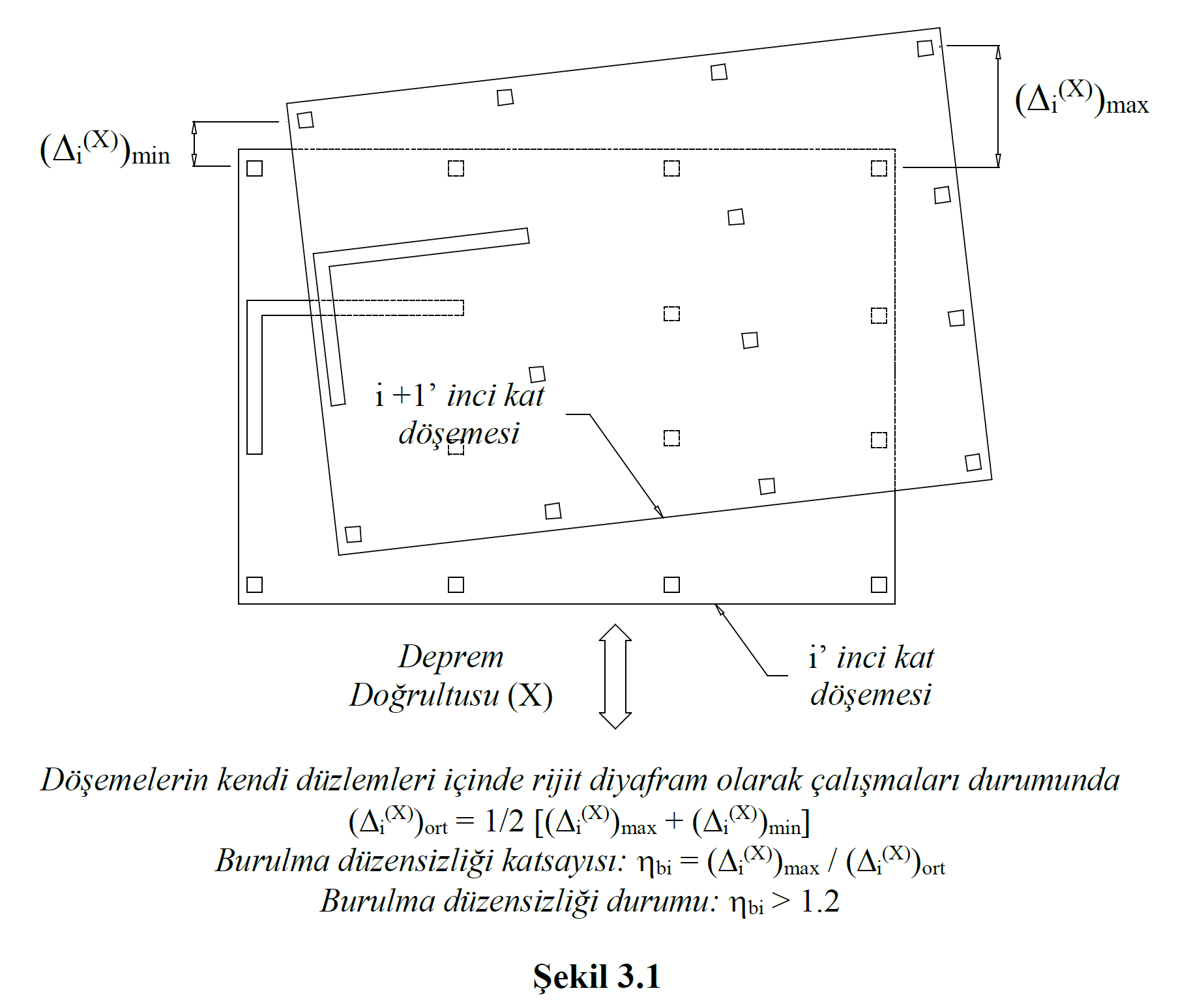Earthquake Code Statement (3.6.2.1)
Torsion
Irregularity Coefficient η bi , which expresses the ratio of the maximum relative displacement at any floor to the average relative displacement in the same direction at that floor for any of the two earthquake directions perpendicular to each other , is automatically controlled.
The calculation of the relative storey drifts is made automatically according to 4.7 , taking into account the effects of 5% additional eccentricity .
ICONS
(Δ i (x) ) ort = Average reduced relative storey displacement on the i'th floor of the building
(Δ i (x) ) max = Maximum reduced relative storey displacement on the i'th storey of the building
η bi = Torsional Irregularity Coefficient defined at the i'th storey
A1 - Torsion Irregularity is the case where the Torsional Irregularity Coefficient η bi , which expresses the ratio of the largest relative displacement at any floor to the average relative displacement at the same direction for any of the two earthquake directions perpendicular to each other , is greater than 1.2 ( Figure 3.1 ).

Modal Response Spectrum Analysis Mode Addition Method in Time Domain Linear Earthquake Calculation with Modal Calculation Methods is valid.

According to Table 3.6 , the calculation of the relative storey drifts is made according to the Equivalent Earthquake Load Method described in Section 4.7 of TBDY, taking into account the + - 5% eccentricity effects . While Modal Calculation Methods are used in the earthquake calculation of the building, Equivalent Earthquake Load Method is used in A1 type irregularity control.
Next Topic
